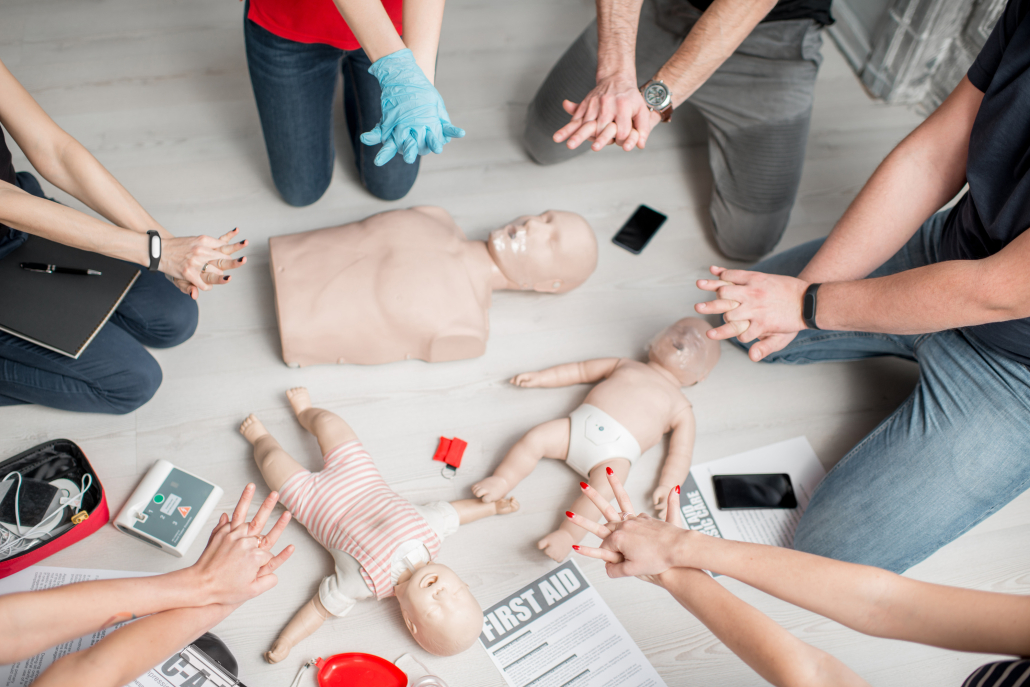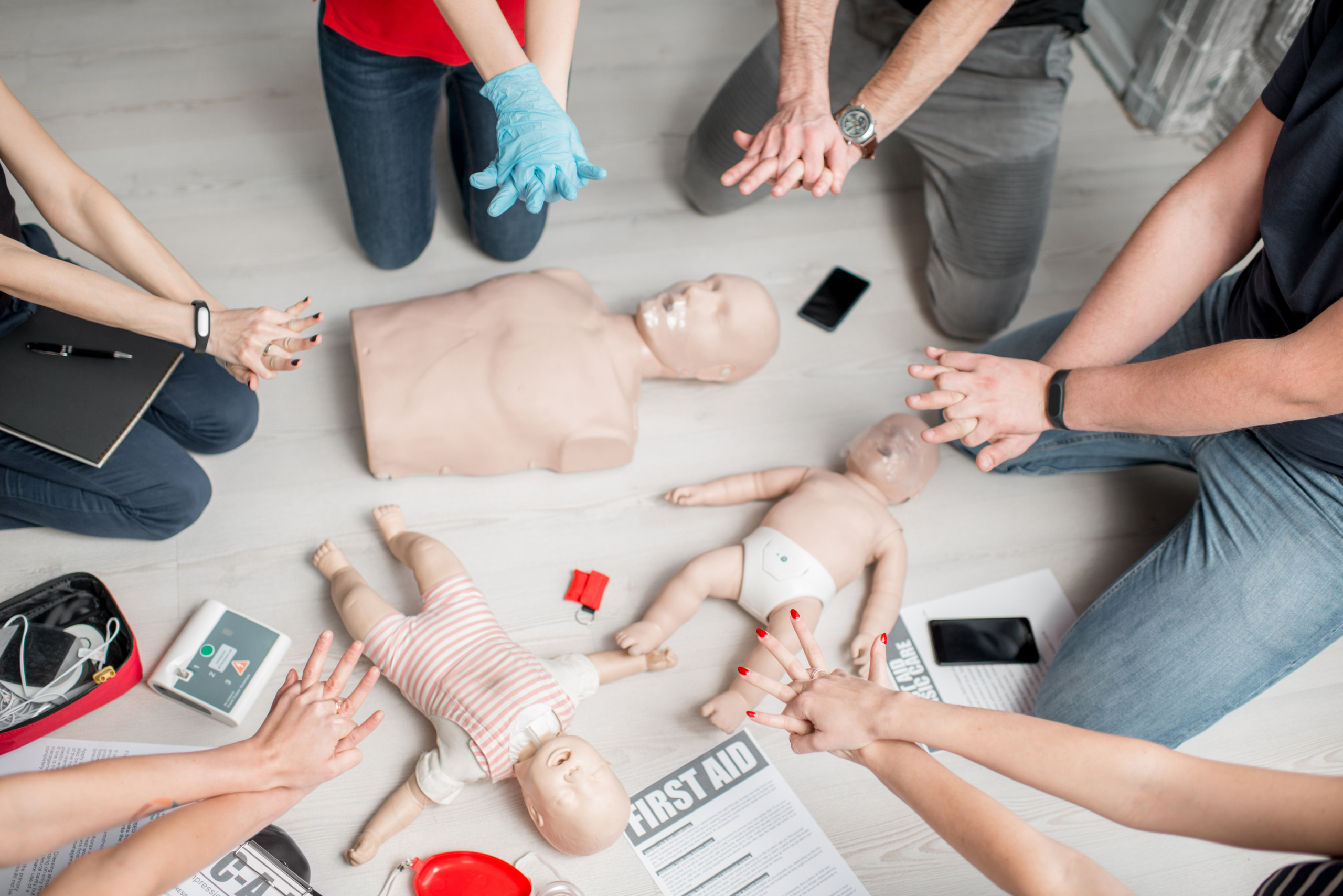New First Aid Requirements: What BC Schools Need to Know
As of July 1, 2025, all public secondary schools in British Columbia are required to provide CPR and AED training to Grade 10 students. This new mandate is part of the revised Physical and Health Education (PHE 10) curriculum and is a significant step toward improving emergency preparedness in school communities. Additionally, all secondary schools will be required to have AEDs and Naloxone on site by Dec 31, 2025. The same will be coming for middle schools and elementary schools but they have up until September 8, 2026 to comply with the AED and Naloxone requirements.
However, the rollout of this requirement comes with many questions — especially for educators and administrators already juggling limited budgets and staff capacity. From clarifying what’s mandatory to figuring out how to deliver training effectively, schools across the province are now facing urgent decisions about compliance, equipment, and instruction.
Here’s everything BC schools need to know.

What’s Required Under the New Policy?
The new curriculum update makes it mandatory for all Grade 10 students to receive basic CPR and AED training as part of their PHE 10 classes. This means that school staff — most often physical education teachers — will be responsible for delivering the training during regularly scheduled gym periods. For schools that want a less hands on approach, it is possibly to bring in external instructors too.
It’s worth noting that students are not required to earn a certification card through a recognized provider. The goal is to ensure students understand and can perform basic lifesaving skills rather than meet the formal requirements of a certified course. That said, the Ministry has left the door open for school districts to offer additional training or certification where resources and community interest allow.
This flexibility is helpful — but it also creates a patchwork of approaches. Some schools will prefer to keep it simple and in-house, while others may seek professional instructor support or look to elevate the training with optional certification for students.
- All Grade 10 students must receive CPR and AED training
- This is now a mandatory part of the PHE 10 curriculum.
- Training must take place during Physical and Health Education classes
- It’s expected to be delivered by the school’s teaching staff (typically PE teachers).
- Certification is NOT required
- Students do not need to earn a formal CPR certification card.
- However, schools and districts may offer additional training and certification if desired.
- Naloxone is NOT part of the required curriculum
- While schools must have naloxone kits available on-site as part of broader emergency preparedness policies, opioid overdose training is not part of the Grade 10 PHE curriculum.
AEDs and Naloxone Kits Now Mandatory in Schools
In addition to the curriculum change, BC has also introduced a separate health emergency response policy requiring AEDs (Automated External Defibrillators) and naloxone kits to be accessible in all public schools.
This is a response to growing concerns about both cardiac events and opioid-related emergencies on school grounds. While rare, these events can be fatal — and having the right equipment on hand can make all the difference.
Each school board is expected to acquire equipment on the following schedule:
- Secondary schools are equipped by December 31, 2025
- Elementary and middle schools are compliant by September 8, 2026
This policy applies to all public school boards across BC, regardless of current resources or previous emergency preparedness plans.
A Big Ask — With No Extra Budget
One of the most pressing concerns facing school leaders is the fact that no new funding has been provided by the province to support the rollout of this policy. Budgets have already been created and the turn around time is tight, especially for those in secondary schools.
Schools must find their own way to:
- Purchase AEDs and Naloxone kits
- Train PE teachers to deliver CPR and AED content
- Acquire CPR mannequins, AED trainers, and other instructional tools
- Decide whether to deliver training internally or outsource to certified instructors
This leaves many schools scrambling — especially those with already-stretched budgets or limited staff training capacity. But there’s a solution.
How Alert First Aid Can Help
At Alert First Aid, we understand that schools need more than just information — they need a practical, affordable way to meet these new requirements.
We’ve developed flexible packages to support every type of school or district. Whether you want to train your own teachers to deliver the program or would prefer our certified instructors to handle it for you, we’ve got you covered. We also supply everything from AEDs and naloxone kits to CPR mannequins, training materials, and signage — all in one place.
Even better? We may be able to offer financing terms, so schools can spread out the cost and avoid a massive one-time hit to their budget.
Book a Free School Safety Assessment
Not sure where to start? Let us help. We offer a free readiness assessment for schools and districts, including:
- A review of your current AED and Naloxone equipment
- A consultation on how to implement CPR/AED training for Grade 10 students
- Recommendations for equipment, training formats, and compliance strategies
We’re here to make this transition easier — not harder.
Final Thoughts
The new CPR and AED training requirement is a critical move toward preparing students to act in life-threatening situations — but it comes with logistical and financial hurdles. With the added expectation of having defibrillators and naloxone on site, schools need a clear plan and trusted partners.
Alert First Aid is ready to be that partner.
Let’s make your school safer — and help your students learn how to save lives.
Contact us via sales@alertfirstaid.com or call 1-866-282-5378




Leave a Reply
Want to join the discussion?Feel free to contribute!